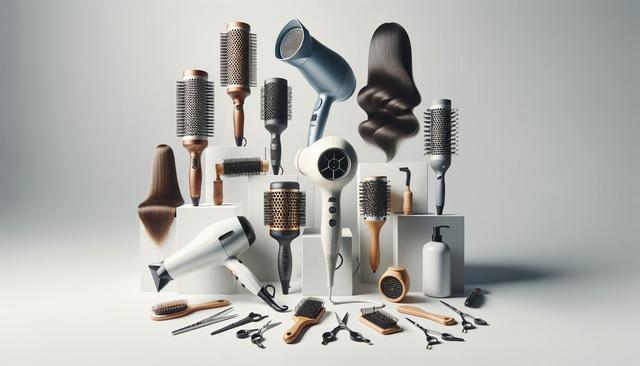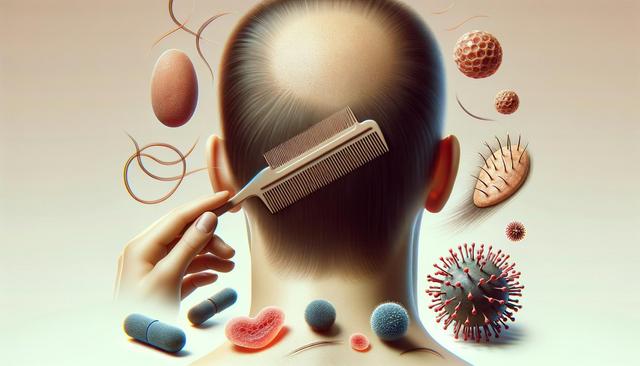Understanding Hair Types and Dryer Needs
Hair dryers are not one-size-fits-all, and understanding your hair type is the first step toward selecting a tool that works most effectively for your needs. Different textures and thicknesses respond uniquely to heat, airflow, and technology. For instance, fine or thin hair is more prone to heat damage and benefits from lower heat settings. On the other hand, thick or coarse hair often needs higher heat and power to dry efficiently without frizz.
Here’s how hair types generally respond to different dryer features:
- Fine hair: Needs low heat and ionic technology to minimize heat exposure and static.
- Thick hair: Requires high wattage and strong airflow for faster drying.
- Curly hair: Benefits from diffusers and ceramic components to maintain curl shape and reduce frizz.
- Damaged or color-treated hair: Should use infrared and tourmaline dryers for gentle, even heat distribution.
Matching your hair type with the correct dryer type helps reduce styling time, prevent damage, and achieve your desired look more efficiently.
Key Features to Consider When Choosing a Hair Dryer
When evaluating hair dryers, several features can significantly impact your styling experience and results. Selecting a model with the right combination of these features ensures performance that aligns with your hair’s specific needs.
Look for the following features:
- Heat and speed settings: Multiple settings allow for more control and accommodate different hair types and styling needs.
- Cool shot button: Helps to lock in styles and add shine.
- Ionic technology: Reduces frizz and static by breaking down water molecules for faster drying.
- Ceramic or tourmaline materials: Provide even heat distribution and help protect hair from hot spots.
- Attachments like diffusers and concentrators: Customize airflow for defined curls or sleek finishes.
Choosing a dryer with the right features ensures a smoother styling process and healthier-looking hair over time.
Hair Dryers for Fine and Thin Hair
Fine and thin hair requires extra care during drying to prevent breakage and heat damage. A lightweight dryer with adjustable heat settings is crucial. Ionic technology is especially useful for this hair type, as it reduces static and enhances shine without excessive heat.
When shopping for a dryer for fine hair, consider models that include:
- Low heat settings to avoid overheating delicate strands
- Lightweight construction to reduce arm fatigue
- Concentrator nozzles for targeted styling
Additionally, using a heat protectant spray and keeping the dryer moving can further protect thin hair from damage. A model with a ceramic heating element ensures even heat distribution, which is ideal for maintaining hair health.
Hair Dryers for Thick and Coarse Hair
Thick and coarse hair typically takes longer to dry and can often turn frizzy if not handled correctly. A high-wattage dryer with strong airflow is essential for efficiently managing this hair type. Look for models with at least 1800 to 2000 watts for faster results.
Key features to look for include:
- High heat and speed settings
- Ionic and tourmaline technologies to reduce frizz
- Diffuser attachments to enhance texture without puffiness
Dryers with advanced motor technologies, such as AC or brushless motors, tend to last longer and provide consistent performance. For added protection, consider a model with infrared heat, which penetrates the hair shaft and dries from within, minimizing surface damage.
Options for Curly, Color-Treated, and Damaged Hair
Curly, color-treated, and damaged hair types benefit from gentle drying methods that preserve moisture and reduce breakage. A dryer with ceramic and tourmaline technology provides even, far-infrared heat that minimizes frizz and enhances shine. For curls specifically, a diffuser is an essential attachment that helps maintain curl pattern and volume.
Recommended features for these hair types include:
- Infrared heat for gentle drying
- Multiple heat and speed settings for flexibility
- Cool shot function to set styles and seal cuticles
Color-treated hair is especially vulnerable to heat, so it’s important to use the lowest effective temperature. Some models even include sensors that adjust heat output based on hair moisture levels, offering an extra layer of protection.


